Bespoke answers vital for offshore wind gains
Vietnam has an abundance of offshore wind (OSW) resources, but Vietnam does not have any truly installed yet. Could you point out the main challenges for this area in Vietnam?
 |
| Bui Vinh Thang, country manager in Vietnam at the Global Wind Energy Council (GWEC) |
Vietnam has energetic resources, with the World Bank Group estimating nearly 600GW of technical fixed-bottom and floating OSW resource potential.
The newest draft Power Development Plan VIII (PDP8) targets 7 GW of OSW by 2030, which is an essential step towards meeting the government’s net-zero aim and transitioning away from fossil fuels. We outline the urgent need for a route to enable the installation of 7+ GW of it by 2030, in which key challenges should be improved.
First is a simple remuneration mechanism which is quick to implement and can cover the first tranche of 4-5 GW of projects. A clear timeline for the implementation of an auction to cover the remaining tranche of 2-3 GW this decade.
A centralised and well-organised development/permitting office within the government could oversee the necessary licences and approvals from various public bodies, with a focus on implementing, collecting, and coordinating consultations and comments. This is required in order to ensure that projects can be implemented on time and secure seabed exclusivity for development work.
A marine spatial planning approach which allows for a light mechanism would ensure projects can get underway in the next few years, while a more robust framework is developed to ensure smooth mid-term OSW planning and mitigation of conflict between ocean users.
In addition, enhancing the bankability of power purchase agreements will help it draw in the massive amounts of funding that related projects need in order to succeed. Given the present lending restriction, domestic banks and institutions might not be able to supply enough capital to a new sector like this.
Grid planning and operational improvements that facilitate the integration of OSW should consider location (proximity to the power load centre, for example, in the north and south), well-managed timelines to ensure deliverability on schedule, and specific guidance on the requirements for successful developers. The government may also want to take into consideration mechanisms that encourage private-sector investment in transmission to address upcoming transmission challenges.
Other considerations including a supply chain development plan and ports upgrade also should be addressed by the government.
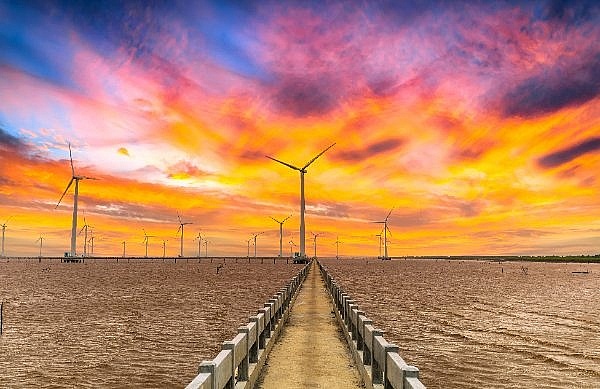 |
| Bespoke answers vital for offshore wind gains |
What is the most urgent challenge at the moment, in terms of the process?
In order to kick-start projects, a developer must secure a site survey licence for the project area. GWEC strongly recommends exclusive site survey licences (SSL) for offshore wind projects. This is consistent with our policy recommendations globally, as we believe it provides an appropriate balance between the interests of developers and governments.
With site exclusivity, developers are more willing to spend the tens of millions of dollars required to advance the development of offshore wind projects, thus helping governments achieve their targets for energy security, net-zero, and cost predictability.
We have noticed that some of our members have obtained survey permits or have submitted applications for survey sites under the existing mechanism, Decree No.11/2021/ND-CP on assignment of certain sea areas to individuals for use of marine resources and related regulation.
These companies have spent considerable time and money over the years perfecting their survey applications, and some have already received survey permits or are nearing completion of the consultation and appraisal process.
GWEC suggests that while waiting for a new mechanism from the amendment of Decree 11, the government would have a transition mechanism in which the existing mechanism could be applied to some “ready-for-approval” applications for survey permits that have almost completed the consultation and appraisal process. By this, we mean applications that have completed the consultation process with relevant authorities with no objection and only await final review and approval from the Ministry of Natural Resources and Environment for issuance of SSLs.
Besides that, to ensure that projects can be built on time, GWEC strongly recommends that certain technical, financial, and readiness criteria be applied when the government selects developers to award site survey licences.
We understand that there are many issues involved. The legal framework and regulations for the wind power industry need to be discussed in more detail. Given the average developing and construction timetable of 6-8 years for projects once all regulations are clear, connecting the first generation of OSW by 2030 will necessitate early consultation and the building of legislative and regulatory frameworks.
We are happy to work with government agencies to provide further information on this.
Vietnam’s potential in this area is hampered by a number of constraints. Are there any suggestions for the country to learn from more mature markets?
GWEC has seen countries build up their OSW industries in different ways. Each countries’ conditions are different, and each has their own models and policies that fit with those conditions. We are excited to see that the Vietnamese government sees the potential of OSW in Vietnam and commits to building up the industry.
However, we don’t recommend Vietnam applies any country’s policies in a stereotypical way. Instead, we recommend that the government learns about other countries examples, both their achievement and mistakes, and then use those lessons to come up with a policy that is suitable with the Vietnamese situation.
For example, Taiwan’s strategy for OSW has a lot of requirement for local content. This strategy helps them develop a local supply chain but makes it harder for them to buy cheaper in the short term. In another example, the UK uses a complicated programme to purchase OSW. It brings transparency and competition, which pushes the price down, but it still needs a lot of work to be ready.
It is a fortunate that GWEC and its member companies have been active in many markets where they have a mature OSW industry. We believe that we have a lot of useful experience and best practices, which we are happy to share with the Vietnamese government.
The transition towards the green path in Vietnam is on a journey that many countries have started, Vietnam has a wealth of natural resources to undertake this, in which policy is incredibly important to ensure for steady and sustainable growth. Besides that, international practical expertise at various levels of the projects will be important to getting the most out of local skills.
International experience will offer solutions for Vietnam’s nascent OSW sector, especially at this crossroads where the country’s energy system decisions will make the difference between a clean energy future and locking in carbon-intensive generation.
| With Vietnam’s bold net-zero commitment and the finalisation of PDP8, Vietnam Wind Power 2022 (VWP), to be held on December 1-2 in Hanoi, will be a crucial event to gather all the key stakeholders in the wind industry to facilitate Vietnam’s just transition to a greener economy. With the continued support from various embassies, government agencies, and the industry, VWP has grown since it began in 2018 and is well-received by various key stakeholders in the wind industry. In 2021, it saw participation of 600+ online and physical attendees despite the challenging pandemic restrictions. This year, the event will be fully physical, where international and local speakers as well as other delegations can meet and connect face to face in the capital. Given Vietnam’s commitment to net-zero by 2050 and a highly ambitious wind target in the latest draft PDP8, VWP2022 will provide a great opportunity for the wind industry to meet, collaborate, and identify opportunities and solutions to accelerate the deployment of wind energy in Vietnam. The conference will continue to explore key questions such as the role of wind power in global energy transition and in Vietnam’s future energy mix, an alternative mechanism to deploy onshore wind and the route to market strategy for offshore wind. |
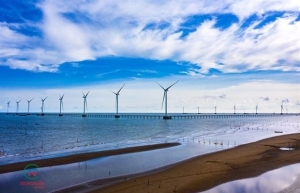 | Offshore wind power investors need better mechanism While Vietnam plans a 7,000MW of offshore wind power by 2030, most of wind farm investors shared their concern about the bidding mechanism for the industry in a recent energy workshop in Hanoi. |
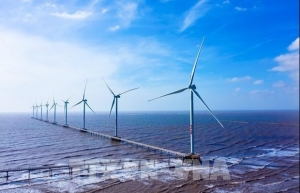 | Meeting seeks ways to tap offshore wind power The Vietnam Administration of Seas and Islands on July 22 held a hybrid consultation to seek advice on promoting the exploitation of offshore wind power. |
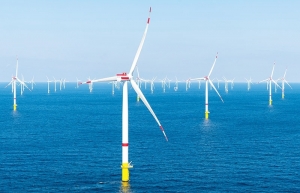 | Offshore wind future in balance for Vietnam The long-awaited Power Development Plan VIII is set to target the development of about 7GW of offshore wind power in Vietnam. However, both investors and localities are waiting for a clearer roadmap. |
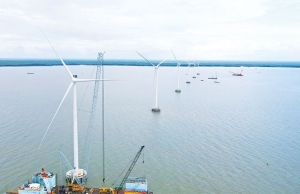 | Survey overlap potential irks wind power developers Due to several legal pitfalls, conflicts may occur among wind power investors, both onshore and off, as they take part in surveying activities for their potential projects. |
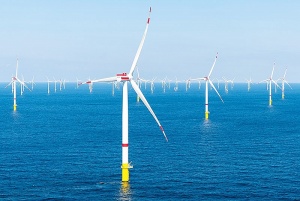 | Investors wait for wind power administration system Offshore wind offers a route to diversify the energy system in a cost-effective way, given the technology’s unmatched track record in driving down costs in the context of the major energy crisis facing the world today. |
What the stars mean:
★ Poor ★ ★ Promising ★★★ Good ★★★★ Very good ★★★★★ Exceptional
Related Contents
Latest News
More News
- Vietnam's IFC to target global investment flows (December 21, 2025 | 18:00)
- Ha Tinh breaks ground on major Vingroup industrial and energy projects (December 19, 2025 | 18:24)
- EVN launches major power infrastructure projects nationwide (December 19, 2025 | 18:17)
- VAL inaugurates second production line to meet domestic animal feed demand (December 19, 2025 | 16:37)
- Sun Group pioneers urban tram system in Phu Quoc (December 19, 2025 | 15:00)
- Top 10 notable events of Vietnam’s industry and trade sector in 2025 (December 19, 2025 | 14:00)
- Seven major projects launched to drive Hanoi’s next growth phase (December 19, 2025 | 14:00)
- Rare, beautiful, sustainable: the mark of iconic real estate (December 19, 2025 | 08:00)
- Mondelez Kinh Do - a chapter of purpose-led leadership in Vietnam (December 18, 2025 | 09:44)
- VNPAY services receive the highest-level PCI DSS international security certificates for six consecutive years (December 17, 2025 | 23:47)

 Tag:
Tag:






















 Mobile Version
Mobile Version